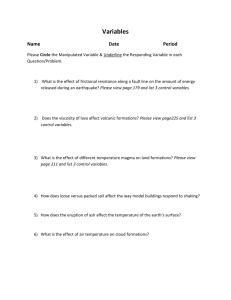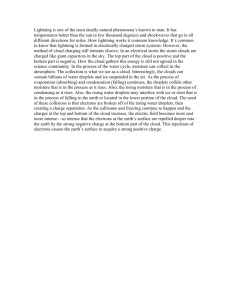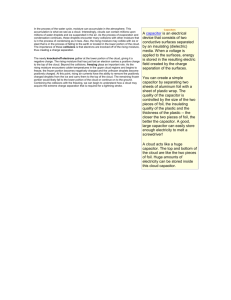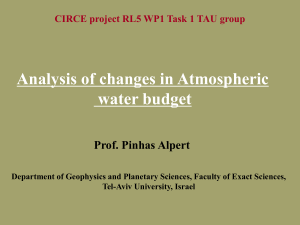Weather Unit Objectives
advertisement
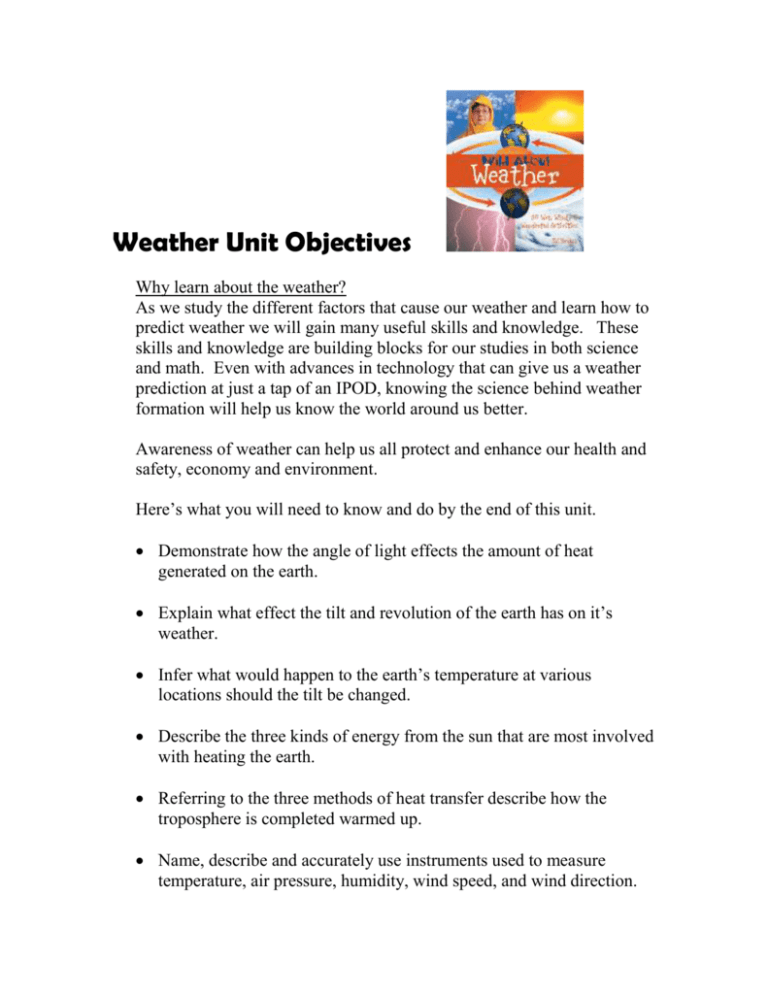
Weather Unit Objectives Why learn about the weather? As we study the different factors that cause our weather and learn how to predict weather we will gain many useful skills and knowledge. These skills and knowledge are building blocks for our studies in both science and math. Even with advances in technology that can give us a weather prediction at just a tap of an IPOD, knowing the science behind weather formation will help us know the world around us better. Awareness of weather can help us all protect and enhance our health and safety, economy and environment. Here’s what you will need to know and do by the end of this unit. Demonstrate how the angle of light effects the amount of heat generated on the earth. Explain what effect the tilt and revolution of the earth has on it’s weather. Infer what would happen to the earth’s temperature at various locations should the tilt be changed. Describe the three kinds of energy from the sun that are most involved with heating the earth. Referring to the three methods of heat transfer describe how the troposphere is completed warmed up. Name, describe and accurately use instruments used to measure temperature, air pressure, humidity, wind speed, and wind direction. Make an accurate aneroid barometer and weather vane. Explain what effects the speed and direction of wind locally and globally. Demonstrate the effects that water and land have on air temperature and wind. Track and graph daily temperature, barometric pressure and sky conditions. Relate the different gasses in air to the living things on earth that use them. Create a chart of showing the gases in air by percentage. Make a cloud and explain what caused it to form. Predict what will happen to the moisture in air using specific temperatures and dew point information. Identify the basic cloud formations. Accurately predict weather while observing specific cloud formations and changing air pressure and temperature. Predict an air masses origin from its moisture content and temperature. Infer air masses interactions with each other from what you know about air temperature and density.

